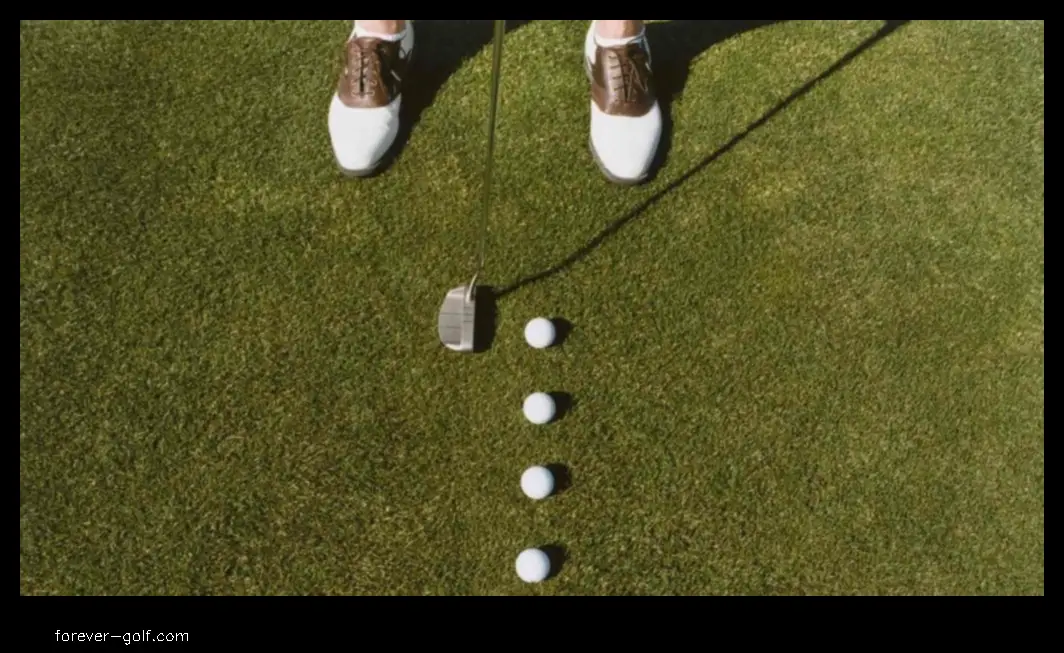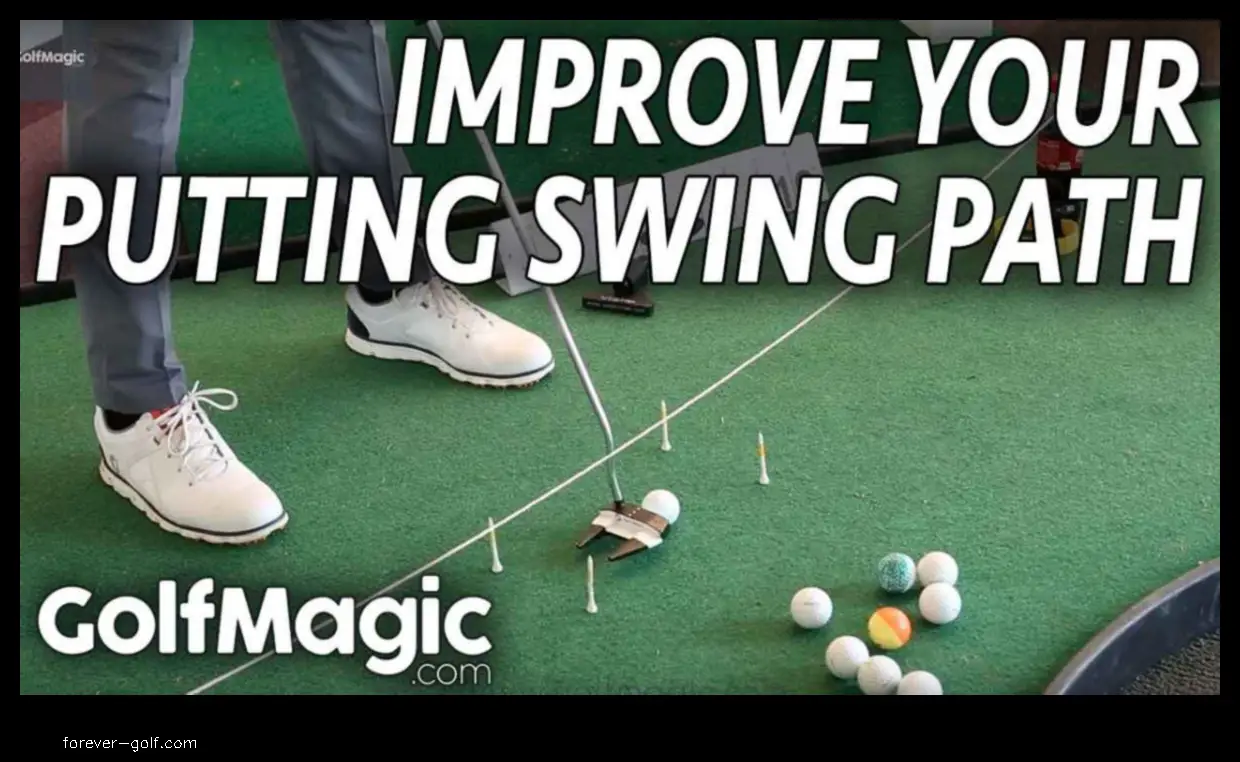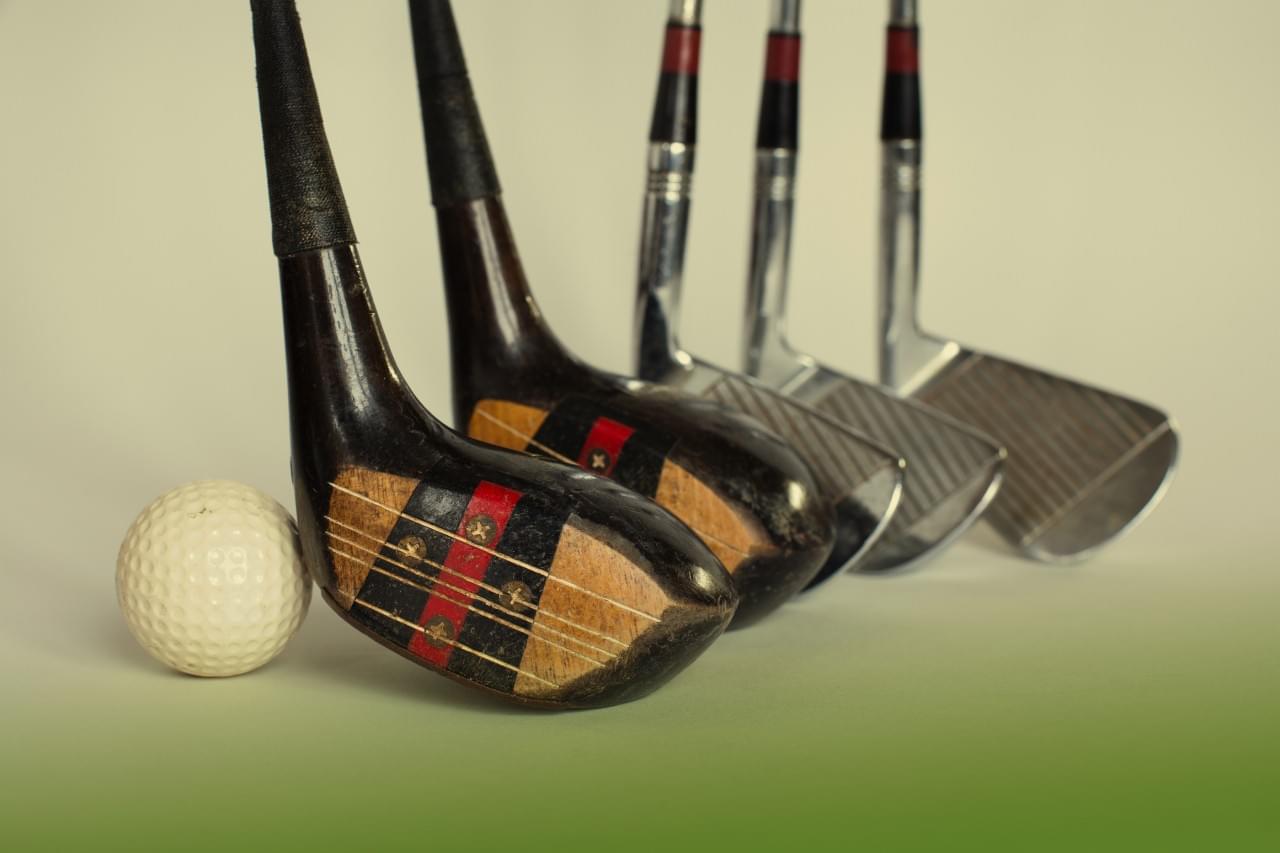
The Ultimate Putting System
The ultimate putting system is a golf training aid that helps golfers improve their putting. It consists of a number of different components, including a putting mat, a ball return, and a video camera.
The putting mat is designed to simulate the conditions of a real putting green. It has a textured surface that helps the ball to roll smoothly, and it is sloped to create a realistic putting angle.
The ball return is a device that automatically returns the ball to you after you have putted it. This allows you to practice your putting without having to retrieve the ball each time.
The video camera is used to record your putting stroke. This allows you to analyze your swing and identify any flaws that you may need to correct.
The ultimate putting system is a valuable tool for golfers of all levels of experience. It can help you to improve your putting stroke, develop a more consistent putting game, and lower your scores.
If you are interested in learning more about the ultimate putting system, please visit our website or contact us today.
| Topic | Features |
|---|---|
| Putting | – Introduction |
| Putting green | – The Basics of Putting |
| Golf putting | – Choosing the Right Putter |
| Putting stroke | – Putting Stroke Mechanics |
| Putting tips | – Putting Drills |

II. The Basics of Putting
Putting is one of the most important parts of golf, but it’s also one of the most difficult. In this section, we’ll cover the basics of putting, including the different types of putts, how to read greens, and how to choose the right putter.
III. Choosing the Right Putter
The right putter for you depends on a number of factors, including your stroke type, your putting style, and your budget.
If you have a straight backswing and throughswing, you will want a putter with a face that is square to the target at impact. If you have an arcing stroke, you will want a putter with a face that is open at impact.
Your putting style also plays a role in choosing the right putter. If you are a blade putter, you will want a putter that is lightweight and has a thin blade. If you are a mallet putter, you will want a putter that is heavier and has a wider head.
Finally, your budget will also impact your choice of putter. There are putters available at all price points, so you can find a putter that fits your needs and your budget.
Here are some tips for choosing the right putter:
- Try out different putters at your local golf store.
- Take your time and make sure you find a putter that feels comfortable in your hands.
- Don’t be afraid to experiment with different putters until you find one that you like.
IV. Putting Stroke Mechanics
The putting stroke is one of the most important aspects of golf, and it’s something that all golfers need to master. A good putting stroke will help you to make more putts, and it will also help you to save strokes on the course.
There are a few key things to remember when it comes to the putting stroke. First, you need to make sure that you’re using the right grip. The most common grip for putting is the reverse-overlap grip, but you may also want to try the conventional grip or the claw grip.
Second, you need to make sure that you’re taking a proper stance. Your feet should be shoulder-width apart, and your knees should be slightly flexed. Your weight should be evenly distributed between your feet.
Third, you need to make sure that you’re swinging the putter in a smooth, pendulum motion. Don’t try to force the ball into the hole. Let the putter do the work.
Finally, you need to make sure that you’re following through on your stroke. This means that you should finish your swing with your arms extended and your putter head pointing at the hole.
If you follow these tips, you’ll be well on your way to developing a good putting stroke.

V. Putting Drills
Putting drills are an essential part of any golfer’s practice routine. They can help you to improve your putting stroke, your speed control, and your accuracy. There are many different putting drills available, so you can find ones that work for your individual needs.
Here are a few putting drills that you can try:
The pendulum drill: This drill helps you to develop a smooth, rhythmic putting stroke. To do this drill, stand behind the ball with your feet shoulder-width apart. Hold the putter in your hands with your arms extended in front of you. Slowly swing the putter back and forth like a pendulum. As you swing the putter, keep your head down and your eyes focused on the ball. Repeat this drill for several minutes.
The lag drill: This drill helps you to develop a lag in your putting stroke. To do this drill, stand behind the ball with your feet shoulder-width apart. Hold the putter in your hands with your arms extended in front of you. Take your stance and start your putting stroke. As you swing the putter back, allow your wrists to hinge and the clubhead to lag behind your hands. As you swing the putter through, release your wrists and allow the clubhead to catch up to your hands. Repeat this drill for several minutes.
The speed control drill: This drill helps you to develop control over the speed of your putts. To do this drill, place a ball on the ground and mark a spot about 10 feet away from the ball. Stand behind the ball and take your stance. Stroke the ball and try to make it roll into the target. Repeat this drill for several minutes, gradually increasing the distance between the ball and the target.
The accuracy drill: This drill helps you to improve your accuracy with your putts. To do this drill, place a ball on the ground and mark a spot about 6 inches to the left and right of the ball. Stand behind the ball and take your stance. Stroke the ball and try to make it roll into the target. Repeat this drill for several minutes, gradually increasing the distance between the ball and the target.
These are just a few of the many putting drills that you can try. By practicing these drills regularly, you can improve your putting stroke, your speed control, and your accuracy. This will help you to make more putts and lower your scores.
VI. Putting Strategies
Putting is a critical part of golf, and there are many different strategies that golfers can use to improve their putting. Some of the most common putting strategies include:
- Reading the green
- Taking the right line
- Making a smooth stroke
- Using a variety of putting strokes
- Practicing regularly
Reading the green is one of the most important aspects of putting. Golfers need to be able to read the slope of the green and the grain of the grass in order to make the correct putt. Taking the right line is also essential, as golfers need to make sure that their putt is aimed at the correct spot on the green.
Making a smooth stroke is another important part of putting. Golfers need to make sure that they don’t take the putter back too far or swing it too fast. A smooth stroke will help golfers to make more accurate putts.
Using a variety of putting strokes can also help golfers to improve their putting. Some golfers prefer to use a straight back and through stroke, while others prefer to use a pendulum stroke. Experimenting with different putting strokes can help golfers to find the one that works best for them.
Finally, practicing regularly is essential for improving your putting. Golfers should practice putting every day, even if it’s just for a few minutes. Practicing will help golfers to develop the skills and muscle memory that they need to make more accurate putts.
VII. Putting Mistakes to Avoid
There are a number of common putting mistakes that golfers make, which can lead to missed putts and higher scores. Here are some of the most common putting mistakes to avoid:
-
Lack of practice. The best way to improve your putting is to practice regularly. Make sure to practice on a variety of surfaces, including fast greens, slow greens, and undulating greens. You should also practice different putting strokes, such as the straight back and through stroke, the pendulum stroke, and the arc stroke.
-
Over-gripping the putter. When you grip the putter too tightly, it can cause your stroke to be jerky and inconsistent. Try to grip the putter lightly, with only enough pressure to keep it from slipping out of your hands.
-
Taking too long to stroke the ball. The longer you take to stroke the ball, the more likely you are to make a mistake. Try to take your practice strokes and your actual stroke in a smooth, fluid motion.
-
Not aiming correctly. Before you take your stroke, take a moment to aim the putter face at the target. Make sure to line up the putter face with the ball and the hole.
-
Hitting the ball too hard. It’s tempting to hit the ball as hard as you can on every putt, but this is usually not the best strategy. Instead, focus on making a smooth, consistent stroke and hitting the ball at the right speed.
-
Not following through. When you finish your stroke, be sure to follow through all the way. This will help to ensure that the ball rolls smoothly into the hole.
By avoiding these common putting mistakes, you can improve your putting stroke and lower your scores.
Putting Under Pressure
Putting under pressure is one of the most difficult challenges in golf. When you’re standing over a putt that could make or break your round, it’s easy to get nervous and start to doubt yourself.
However, there are a few things you can do to help you stay calm and focused under pressure.
First, take a deep breath and relax your muscles. The more tense you are, the harder it will be to make a good stroke.
Second, focus on the process of making the putt, not the outcome. If you start thinking about how much you need the putt to go in, you’ll only increase your chances of making a mistake.
Finally, trust your ability to make the putt. If you’ve been practicing, you know that you’re capable of making the shot. So take your time, focus on your technique, and let the putt go.
Here are a few more tips for putting under pressure:
- Don’t rush your stroke. Take your time and make sure you’re making a smooth, confident stroke.
- Don’t over-think the putt. The more you think about it, the harder it will be to make.
- Trust your instincts. If you think you should go for it, go for it. Don’t second-guess yourself.
If you follow these tips, you’ll be well on your way to making more putts under pressure.
IX. Putting with Confidence
Putting with confidence is essential for success on the golf course. When you’re confident in your putting stroke, you’re more likely to make the putts that you need to. Here are a few tips for putting with confidence:
- Practice regularly. The more you practice, the more comfortable you’ll become with your putting stroke.
- Visualize success. Before you take a putt, take a few seconds to visualize the ball rolling into the hole.
- Relax and have fun. If you’re tense and stressed, it will be more difficult to make putts.
- Trust your stroke. If you’ve practiced and you’re confident in your stroke, trust that you’ll make the putt.
Putting with confidence is a skill that takes time and practice to develop. However, if you follow these tips, you’ll be well on your way to becoming a more confident putter.
X. FAQ
Q: What is the best way to practice putting?
A: There are a few different ways to practice putting, but one of the best ways is to use a putting green. You can find putting greens at most golf courses, as well as at some sporting goods stores. When you’re practicing on a putting green, try to focus on your stroke mechanics and your speed control.
Q: What are the most common putting mistakes?
A: The most common putting mistakes include:
- Over-swinging
- Lack of speed control
- Stopping the ball too soon
Q: How can I improve my putting under pressure?
A: There are a few things you can do to improve your putting under pressure, including:
- Practice putting under pressure
- Visualize yourself making the putt
- Relax and focus on your stroke
- Where Was the First Topgolf in the English Language - April 5, 2024
- Topgolf Back Net Distance How Far Is It - April 5, 2024
- Top Golf Where to Find the Best Golf Experiences Outside of the U.S. - April 5, 2024









